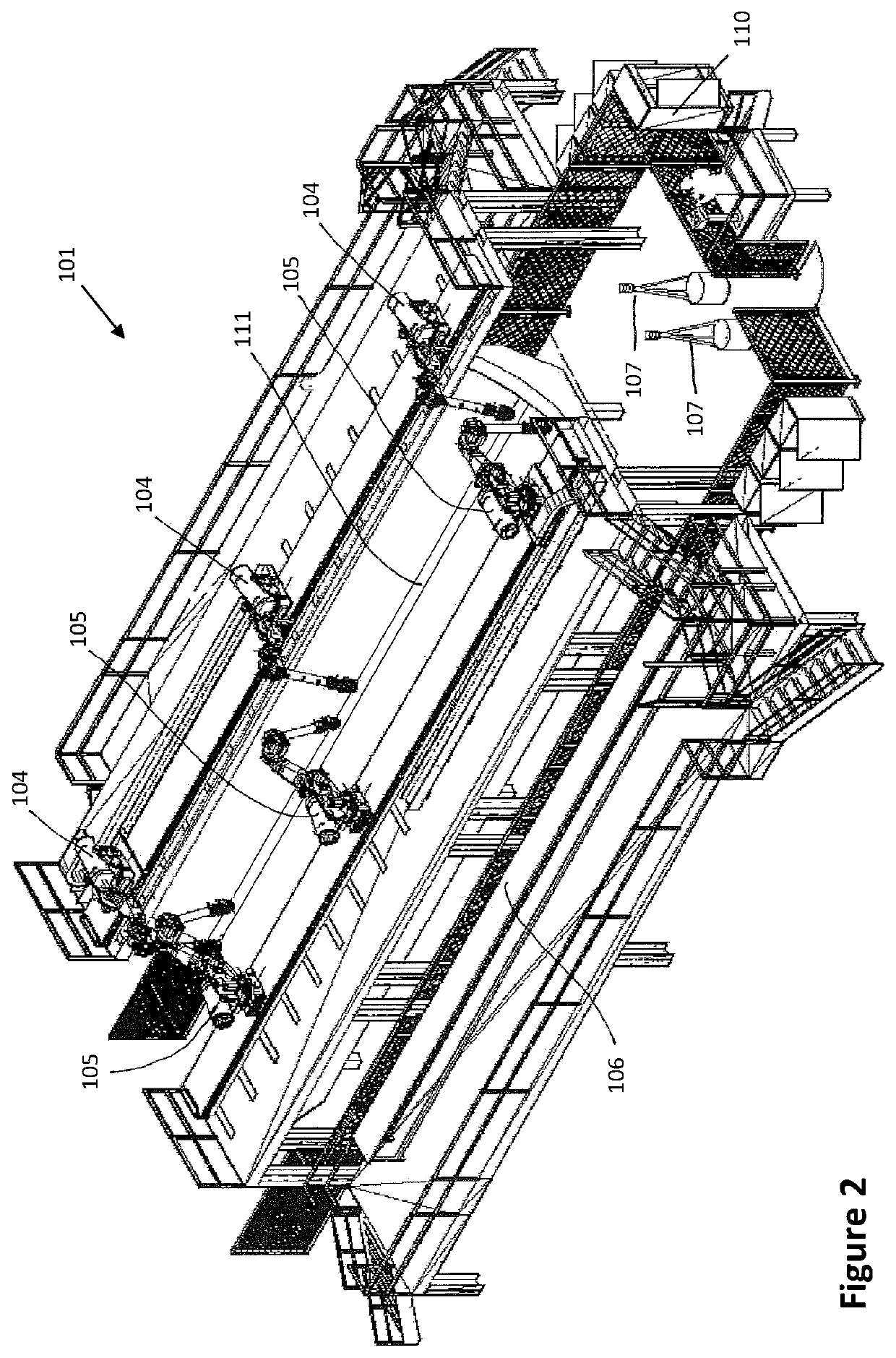Absolute robot-assisted positioning method
a robot-assisted positioning and robot technology, applied in simulator control, computer control, instruments, etc., to achieve the effect of simplifying the initialisation of the facility and putting the facility into operation
- Summary
- Abstract
- Description
- Claims
- Application Information
AI Technical Summary
Benefits of technology
Problems solved by technology
Method used
Image
Examples
Embodiment Construction
[0057]FIG. 1 shows a facility 1, comprising: a tool 2 on which a large-area sub-assembly 3—in this case, a part of an aircraft shell—lies; two robots 4, 5; and a depository 6. The facility 1 also comprises: a measurement system, which consists of the measurement systems 7, 8 and 9; and a computer 10.
[0058]The sub-assembly 3 is a part of an outer shell of an aircraft fuselage which is to be reinforced with ribs or stringers 11. A first rib 11, which has been placed on the depository 6 by other robots which are not shown, can be gripped and placed on the sub-assembly 3 by the robots 4, 5. It has to be placed or positioned on the sub-assembly 3 with absolute precision.
[0059]In order for this to be possible, the facility 1 comprises multiple measurement systems 7, 8, 9 which monitor the movements—i.e. a direction of the movement, a speed of the movement, a distance travelled during the movement, a torque, a pressure force and other parameters—of the robots. The measurement systems 7, 8,...
PUM
 Login to View More
Login to View More Abstract
Description
Claims
Application Information
 Login to View More
Login to View More - R&D
- Intellectual Property
- Life Sciences
- Materials
- Tech Scout
- Unparalleled Data Quality
- Higher Quality Content
- 60% Fewer Hallucinations
Browse by: Latest US Patents, China's latest patents, Technical Efficacy Thesaurus, Application Domain, Technology Topic, Popular Technical Reports.
© 2025 PatSnap. All rights reserved.Legal|Privacy policy|Modern Slavery Act Transparency Statement|Sitemap|About US| Contact US: help@patsnap.com


